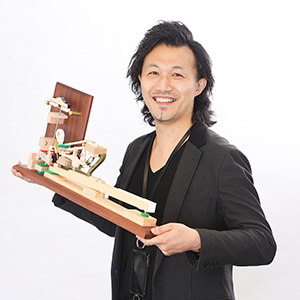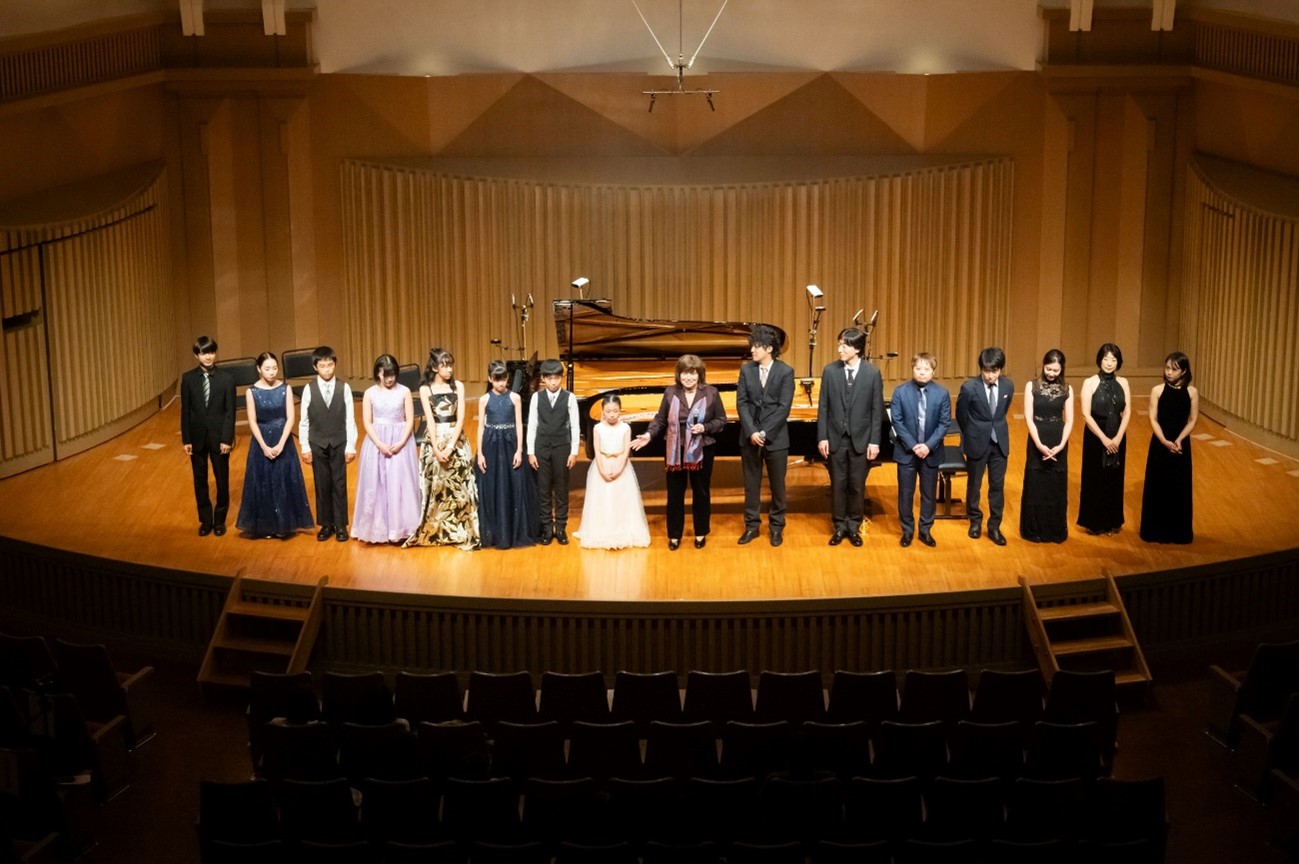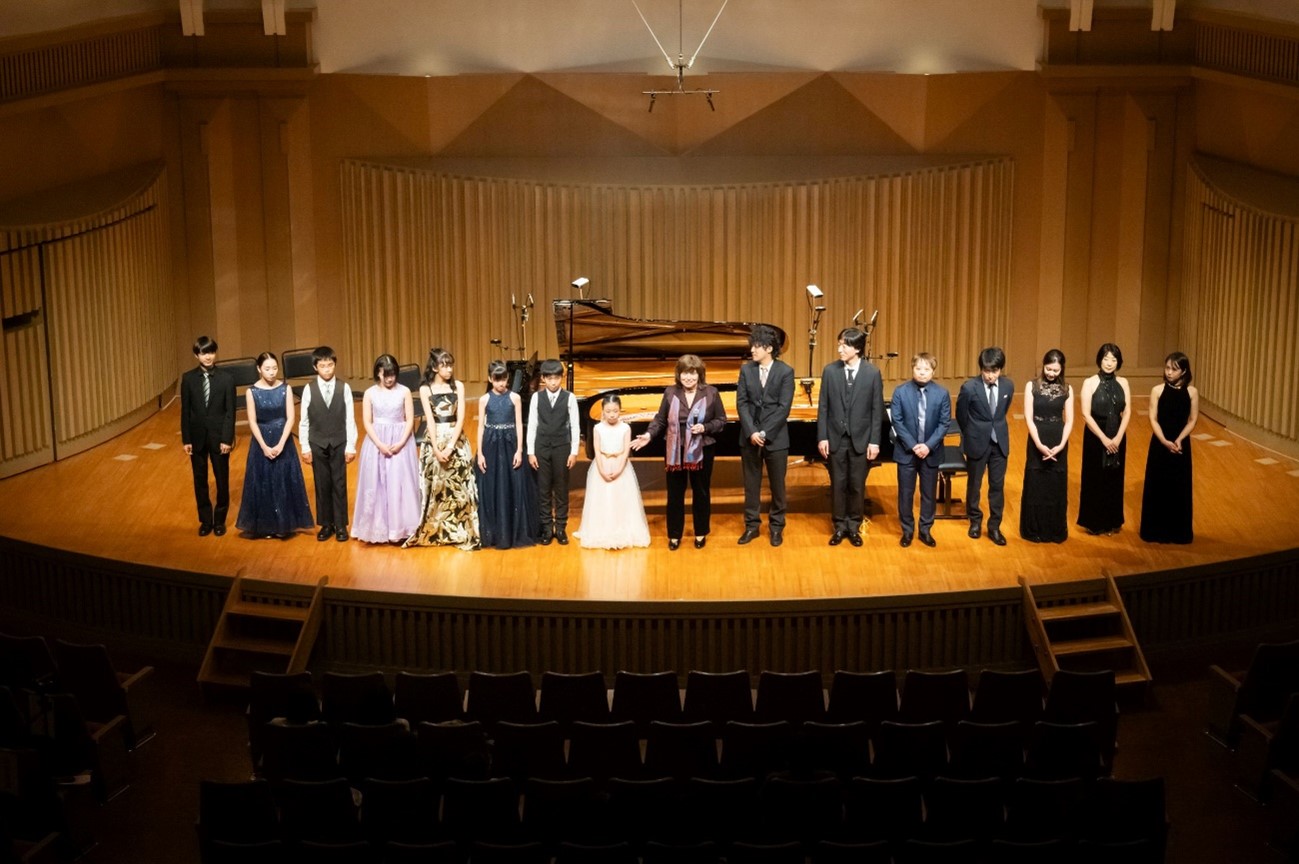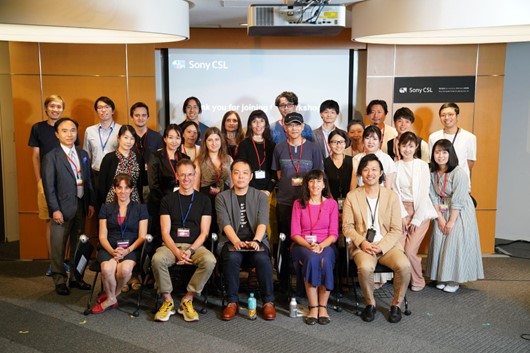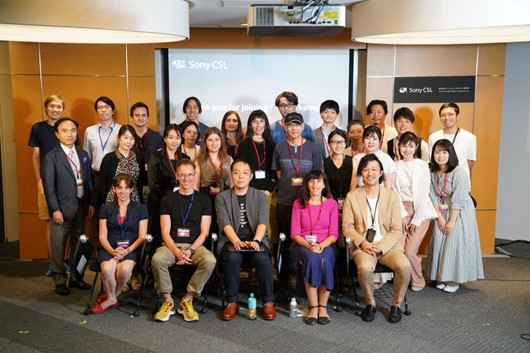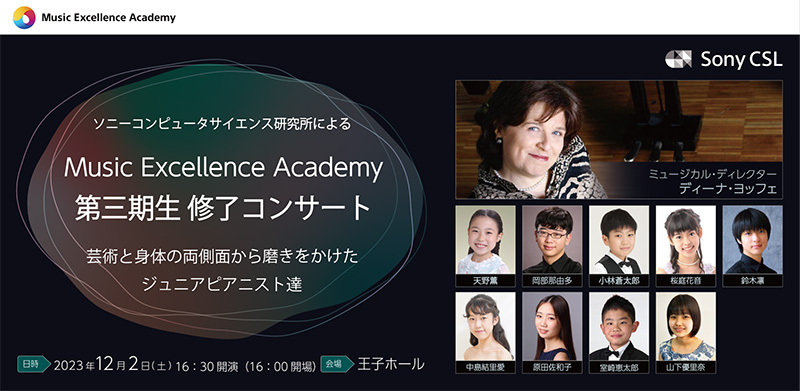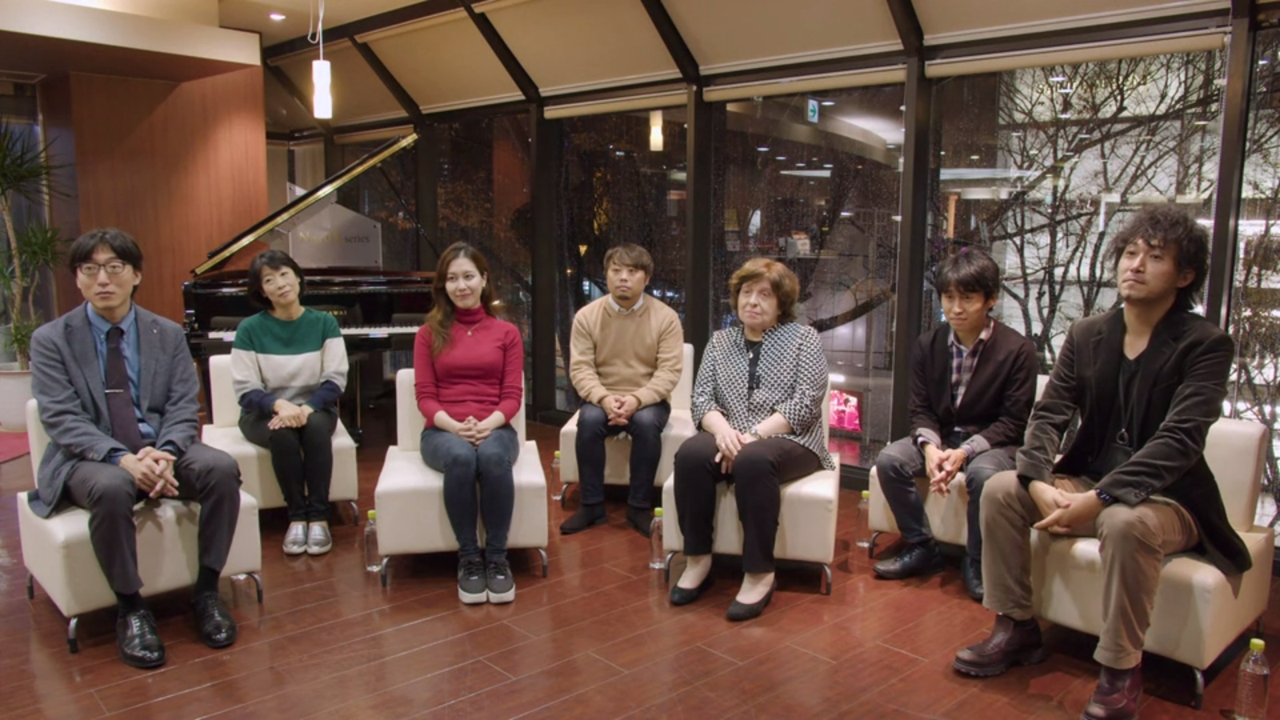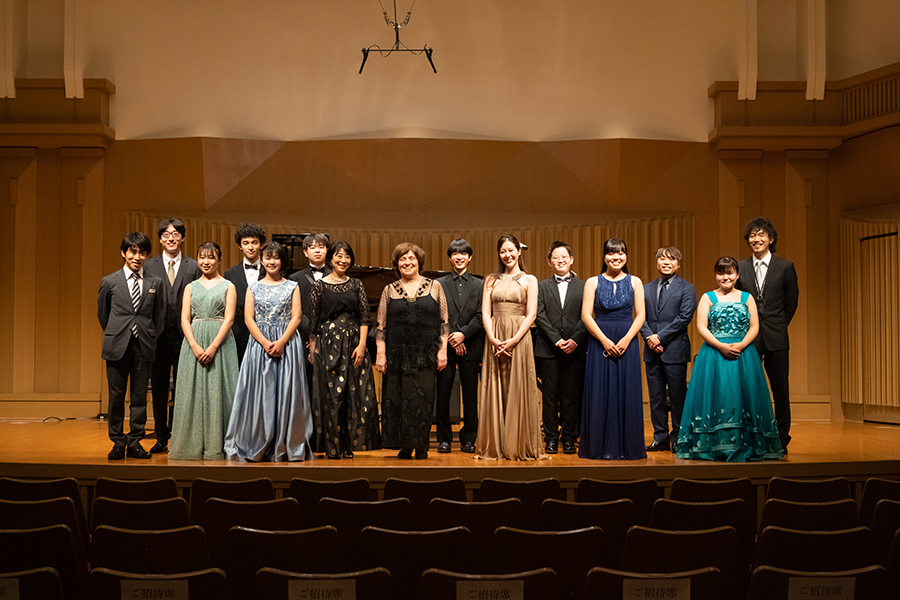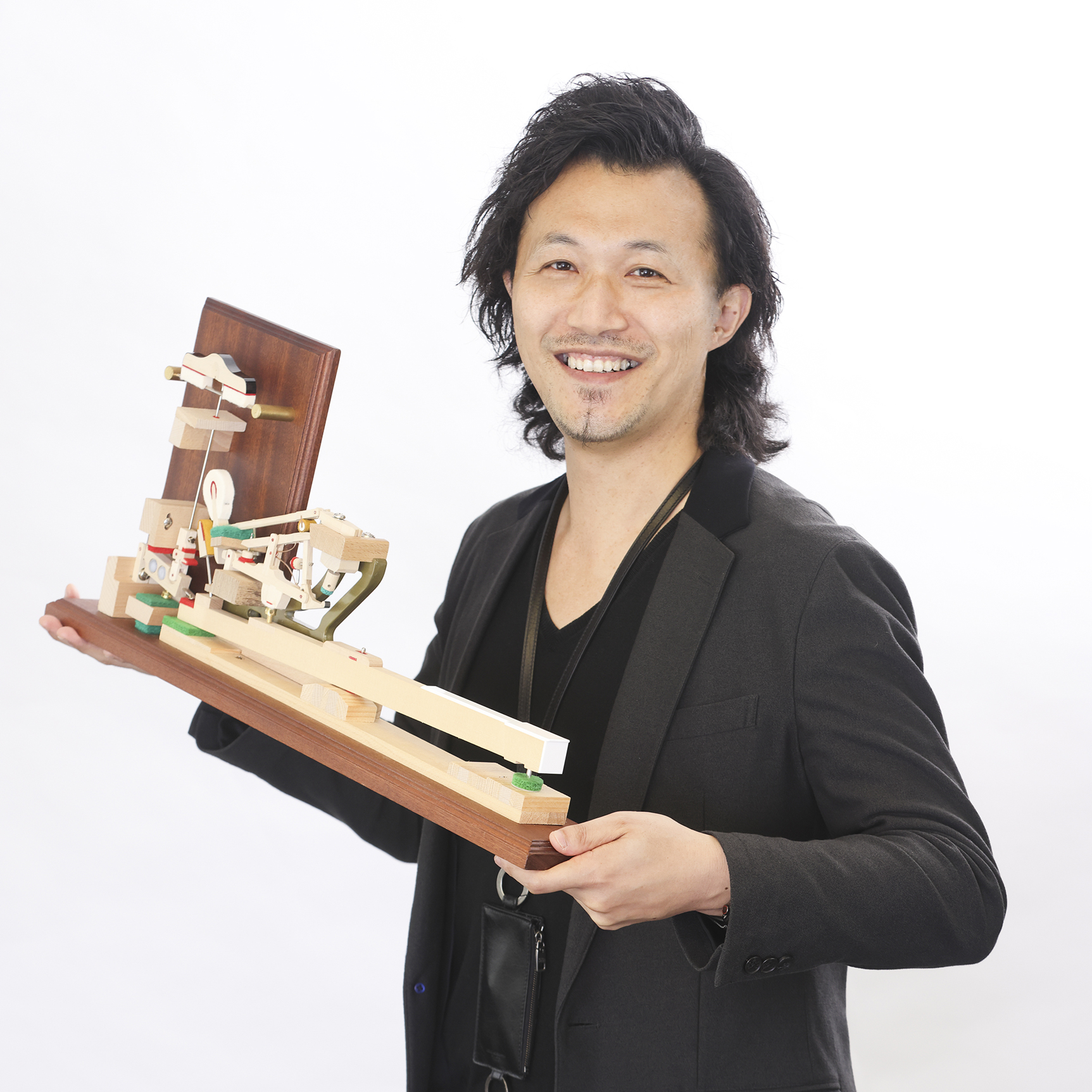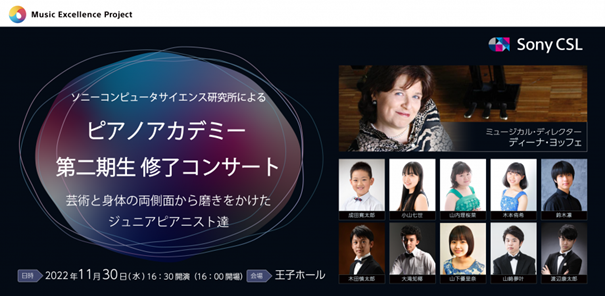ソニーCSLは、2020年7月30日に音楽芸術活動に携わるアーティストの成長を支援する「ミュージック・エクセレンス・プロジェクト」を立ち上げました(プレスリリース)。このプロジェクト初の取り組みとして、10代のピアニストを対象とした身体教育と芸術教育を包括的に提供するアカデミープログラムを2020年8月1日より展開しています。音楽表現の高みを追求し、技術と精神両面の持続的向上につなげる包括的なピアノ教育プログラムは世界初の取り組みとなります(アカデミープログラム詳細)。
3月には、2回目となるマスタークラスを実施。今回もオンラインレッスンとなりましたが、その様子を音楽ライターの高坂はる香さまに取材いただきました。
身体教育、芸術教育は、大切な両輪
―演奏テクニックとは、あくまで、心に思い描いたアイデアを音にしていくための手段にすぎない。鍵盤を操る完璧な技術を手に入れたところで、楽譜から豊かな音楽を読み取ることができる感性がなければ、意味はない。
これは、テクニック重視のピアノ教育に警鐘を鳴らす意味で、しばしば言われることです。しかしだからといって、テクニックが不要なはずはありません。
世界で活躍するあるピアニストは、頭に思い描いた表現を音にしようと思えば、幼少期からみっちり教え込まれ身につけたテクニックのおかげで、指が勝手に動いていく、と話していました。自分だけの音楽を思い描く豊かな感性、それを鍵盤を操って音にする技術は、ピアニストにとって、大切な両輪です。
「ミュージック・エクセレンス・プロジェクト」は、10代のピアニストを対象に、そんな二つの面からの教育―身体教育、芸術教育を包括的に提供するプログラムです。
一般的なピアノ教育と少し異なるのは、身体能力や精神的な強さのために、脳や身体の働きの科学的な分析から、より効果的な教育を行うことが追究されているところでしょう。ディーナ・ヨッフェ先生という世界水準のピアニストによる指導に、この科学的視点からの指導が加わることで、前述の“両輪”を形成していくことになります。
今回は、2020年8月にスタートしたこのプロジェクト1期生が受講した、ヨッフェ先生によるレッスンの様子を見学しました。
無感情な音は一音でも見過ごさない、ヨッフェ先生のレッスン
コロナ禍でヨッフェ先生の来日が叶わず、昨年12月に続き、再びオンラインという形で実施された今回のレッスン(ヨッフェ先生のレッスン月以外は、毎月1回、アシスタント講師による対面レッスンが実施されています)。
東京側のレッスン室には、3本のマイク、そして右サイドだけでなく左サイドにも、バスの指使いを確認するためのカメラが設置されています。ヨッフェ先生側のレッスン室にも、研究所で用意したスピーカーとマイク一式が設置され、申し分ないオンラインレッスン環境が整っています。
今回は、9人の一期生の中から、お二人の受講生のレッスンを拝見しました。
・松岡侑さん
はじめの課題となったのは、バッハの平均律第2巻より第11番。すぐに弾き始めるのではなく、まずは話をしましょうというヨッフェ先生。
ヨッフェ先生
「バッハの楽譜に書かれていることが何を意味しているのかを理解しないといけません。それによって、この曲に適したテンポ、アーティキュレーションが決まります」
実際に弾き始めると、ヨッフェ先生は、一音一音をちゃんと発音し、次の音につなげることが大切だと力説します。その音を鳴らすための指の使い方を、できるようになるまで、とにかくしつこく(!)、時間をかけて丁寧に指導していました。
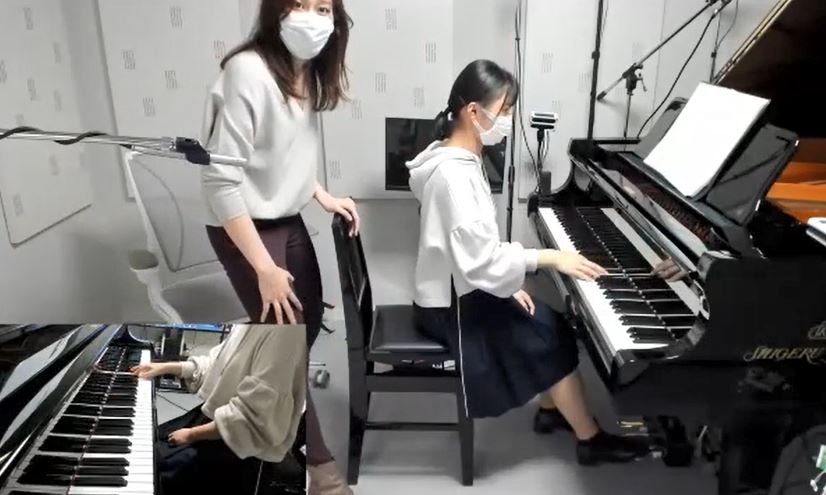
続いて課題となったのは、ショパンのエチュードOp.10-10。松岡さんの演奏を聴いたヨッフェ先生が指摘したことは……。
ヨッフェ先生
「書かれているアーティキュレーションを、丁寧に反映させていきましょう。そして、楽譜を見て何が表現されているのかを読み取ることについて、もちろん私からアドバイスできることもありますけれど、本来、そこはあなたの仕事ですよ」
「耳が4つあるかのように自分の音を聴いて!」
「日本人はシャイだから、演奏が表情に乏しいなんていわれます。でも、大切なのはショパンと自分だけの関係だというのに、なにをシャイになる必要があるの?」
アドバイスを受けて、レッスンの始まりと終わりで、松岡さんの演奏が見違えるように変わっていきました。
・大滝知椰さん
大滝さんのレッスンも、まずはバッハの平均律から、第1巻第13番。
演奏を聴いて、「最初のフーガのテーマから何を感じているの?」と問うヨッフェ先生。たったいくつかの音によるフレーズですが、先生は無感情な音が一つでも挟まれば絶対に見過ごさず、しっかり歌われるまで何度も繰り返すよう求めます。
ヨッフェ先生
「もしかしたらあなたにとってこの歌い方はやりすぎと感じるかもしれないけれど、こうした表現もしようと思えば可能であることが、まずは大切です」
「バッハを弾くには、バロックの様式感を理解しないといけません。インターネットで、バロック美術をぜひ見てください。そのイメージを思い浮かべることで、音が上昇し、下降するという、バロック時代の芸術表現が理解できると思います」
翌日の課題は、ベートーヴェンのピアノソナタ第10番第1楽章。演奏を通して聴いて、ヨッフェ先生はこう話しました。
ヨッフェ先生
「音楽的には、あなたの表現は全て正しいと思います。そこで技術的な問題に目を向けると、いいところもあるんだけれども、時々うまくいかないところもある。
そこでうまくいかない部分を、どう改善していけばよいか。1小節ずつ私が説明することはできませんから、私がお話しする根本的なことを、自分で全体に反映させていかなくてはいけませんよ」
指を自由に動かすことのできる体の位置、腕や肘の置き方の改善、左手が緊張してしまうことの解消など、技術的に必要な改善点をアドバイスするヨッフェ先生。
こうした一連の指摘を、古屋晋一研究員が見ていて、ヨッフェ先生にどうしてそこを注意されてしまうのか、体の機能を科学的に理解している別の視点から、補足のアドバイスを与えていくのが印象的でした。
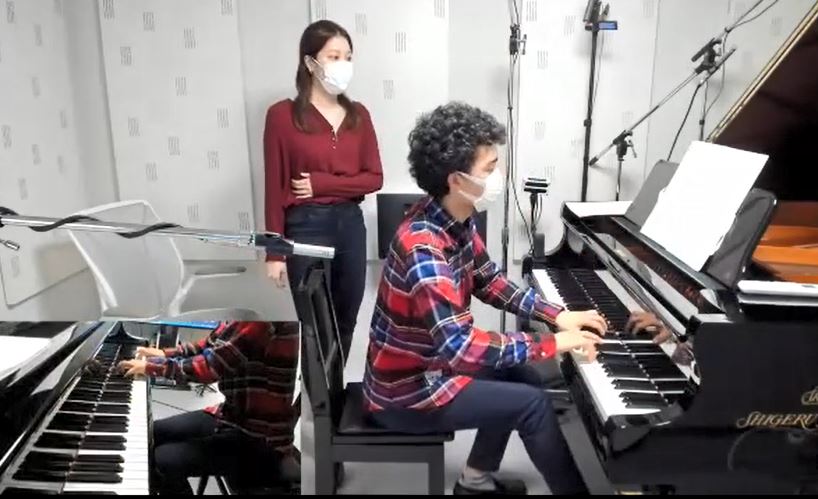
モニター越しに指導を受ける生徒の大滝さんと、指導サポートを行う吉岡先生
***
科学的サイドからのアドバイスが、効率的な成長を促す
ヨッフェ先生は基本、受講生たちを、どこが良くなかったのか、なぜそうなってしまったのかに自分で気がつけるように導いていました。
一方で、先生はベテランの指導者ですが、やはりアーティスト。そこで重要になるのが、言語化されにくい点について、科学的サイドからのアドバイスが加えられること。これにより、問題の解決が効率的に行われるわけです。
さらに各受講生は、レッスンの前後に、ソニーCLSが開発した「Physical Education for Artist Curriculum(PEAC)」を用いて、演奏技術の測定を行います。これは、鍵盤の動きの千分の一の解析をはじめとするさまざまなデータに基づき、タッチを可視化したり、演奏中の姿勢や動きの癖を解析するというプログラム。
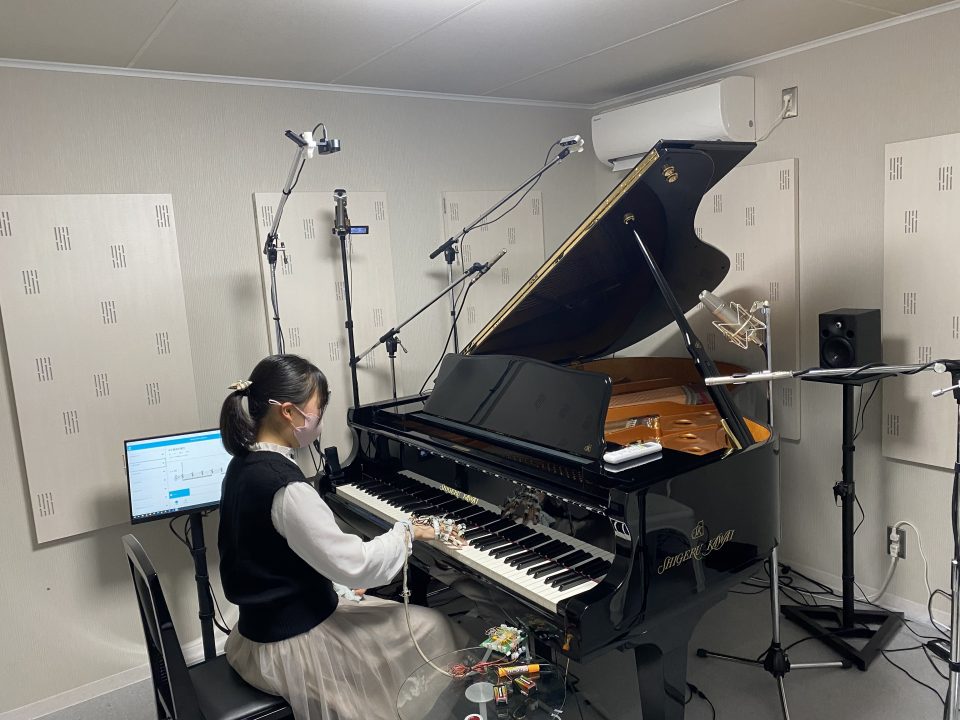
演奏技術の測定を行う生徒の木本さん
Physical Education for Artist Curriculum(PEAC)詳細
これはつまり、レッスンを受け続ける1年間でどのように受講生の体の使い方が変化していくのかが記録されるということ。そのデータを蓄積することで、受講生が自らの変化に気づくことができるだけでなく、今後のピアノ教育のより効果的なあり方を見つけることにもつながります。
数年後、どのような結果が出ているのか。長い目で見て、興味深いプロジェクトです。
(文章=高坂はる香)
Sony CSL launched the Music Excellence Project in August 2020 (Press Release). The program is the world’s first holistic piano study program that combines physical and arts education in supporting young musicians. The Academy Program aims to enable students to seek excellence in musical expression and the sustainable development of skills as they pursue artistic maturity (About the Project).
In March, the second master class was held. Haruka Takasaka, a music writer, reported on this lesson.
Physical Education and Arts Education: A Vital Harmony
Musical technique is nothing more than the means of turning the ideas in our minds into sound. Perhaps you can touch the keys of a piano with perfect technique, but it doesn’t matter if you can’t bring the richness of the music off the page.
This is often taken as a warning against piano instruction that focuses on technique. But of course we don’t mean that technique isn’t necessary.
World-class pianists[s/p?] have talked about how, when they want to express the ideas in their head through music, it is the technique drilled into their heads since early childhood that allows them to move their fingers exactly the way they want. It is vital for a pianist to have both an individual sound informed by a rich aesthetic sensibility, and the technical skill to create it.
The Musical Excellence Project is a program that offers pianists aged 10-19 these two types of education—physical education and arts education.
What makes it somewhat different from typical piano training is that it uses scientific analysis of how the brain and body work to increase physical and mental strength; this seems to us to be a more effective way of doing things. To this scientifically minded guidance, we add the artistic guidance of Professor Dina Yoffe, a world-renowned pianist. And thus our “vital harmony” is created.
I observed lessons that Prof. Yoffe gave to the project’s inaugural class, who began their studies in August 2020.
Lessons from Dina Yoffe: Do not overlook the emotion of a single sound
Due to the coronavirus, Prof. Yoffe was not able to come to Japan, so her lessons were held online, just as they were last December (in months where Prof. Yoffe does not give lessons, assistant instructors give face-to-face lessons once a month).
In the lesson space in Tokyo, we have three microphones, and cameras installed on both the left and right sides of the piano[s/p?], in order to ensure we capture the fingering of the lower notes. Prof. Yoffe’s lesson room is also equipped with speakers and microphones set up by the project. It is an online learning environment that wants for nothing.
On this occasion, I observed the lessons of two of the nine first-year students.
Yū Matsuoka
We begin with Bach’s Well-Tempered Clavier, Book II, No. 11. Professor Yoffe doesn’t want to start playing right away. First, she wants to discuss.
Prof. Yoffe
“You must understand what Bach means by the notes he writes. Then you can determine the appropriate tempo and articulation.”
Prof. Yoffe emphasizes that when you actually play, it is crucial to articulate each note, and connect it to the next note. She offered patient guidance, as long as it took (!), until the student was able to use her fingers to create the right sounds.

Next up was Chopin’s Études, Op. 10, No. 10. Prof. Yoffe listened to Matsuoka’s performance and made the following observations:
Prof. Yoffe
“Make sure to incorporate the noted articulations properly. Of course I can give you advice about how to express what is written in the sheet music, but ultimately, that’s your job.”
“Listen to your own performance. Act like you have four ears!”
“Some people say the Japanese have poor expressivity, because they are shy. But it’s just you and Chopin here. That’s all that matters. What do you need to be shy for?”
After receiving this guidance, Matsuoka’s performance changed dramatically. The beginning and the end of the lesson sounded like two different pianists.
Tomoya Otaki
Otaki’s lesson also began with Bach’s Well-Tempered Clavier: Book I, No. 13.
After listening to the performance, Prof. Yoffe asked, “What does the first fugue theme make you feel?” It’s a short phrase, just a few notes, but as the professor says, do not overlook the emotion of a single sound. She makes him repeat the phrase again and again until he gets it right.
Prof. Yoffe
“You probably think this style of performance is overdoing it, but it’s important that you learn it, so that you can do it when you want to.”
“To play Bach, you must understand the Baroque style. Please look up some Baroque art online. By conjuring up those images, you begin to understand Baroque artistic expression, that rising and falling of notes.”
The following day, they worked on the first movement of Beethoven’s Piano Sonata No. 10. Prof. Yoffe listened to a performance of the piece, and offered the following comments:
Prof. Yoffe
“Musically, your style of expression is totally correct, so let’s turn to issues of technique. You are doing some things well, but you’re off here and there. So how can we improve the parts that aren’t working? We can’t go through measure by measure, but I want you to reflect the issues I’m talking about through the entire piece.”
Prof. Yoffe then offered Otaki advice on the necessary improvements to technique, including how to position his body for good finger movement, how to place his arms and elbows, and how to eliminate the tension in his left hand. Dr. Shinichi Furuya was observing this series of instructions, and he gave additional advice regarding the points Prof. Yoffe raised from a different perspective, based on his scientific understanding of the body. It was impressive to watch!

***
Scientifically minded advice fosters effective growth
Essentially, Prof. Yoffe helped the students realize what their mistakes were, and why they were making them.
And while Prof. Yoffe is an experienced teacher, she is ultimately an artist. For issues that can be difficult to put into words, it is also important to offer scientifically minded guidance. We believe this approach offers a more effective way of solving challenges.
Furthermore, before and after the lessons, each student undertakes an assessment of performance skill using the Physical Education for Artists Curriculum (PEAC) developed by Sony CSL. Using a wide range of data, including each keyboard strike broken down into a thousand discrete moments, this program can visualize the touches and analyze the postures and movements of a performance.
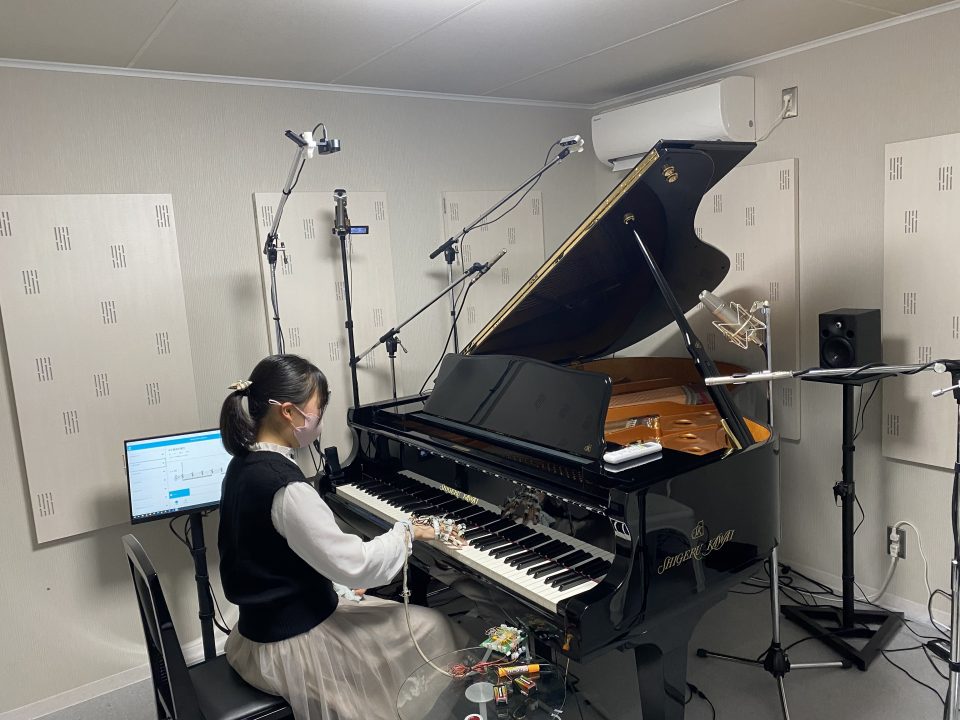
Ms. Kimoto, a student, measuring her performance technique.
Physical Education for Artist Curriculum(PEAC)
Ultimately this means we are recording the changes in the students’ physical attributes over their year of lessons. Through the collection of this data, the students will not simply see how they have physically changed—we will be able to discover for themselves more effective ways of learning the piano.
What results will we see a few years down the road? The long-term prospects are fascinating.
